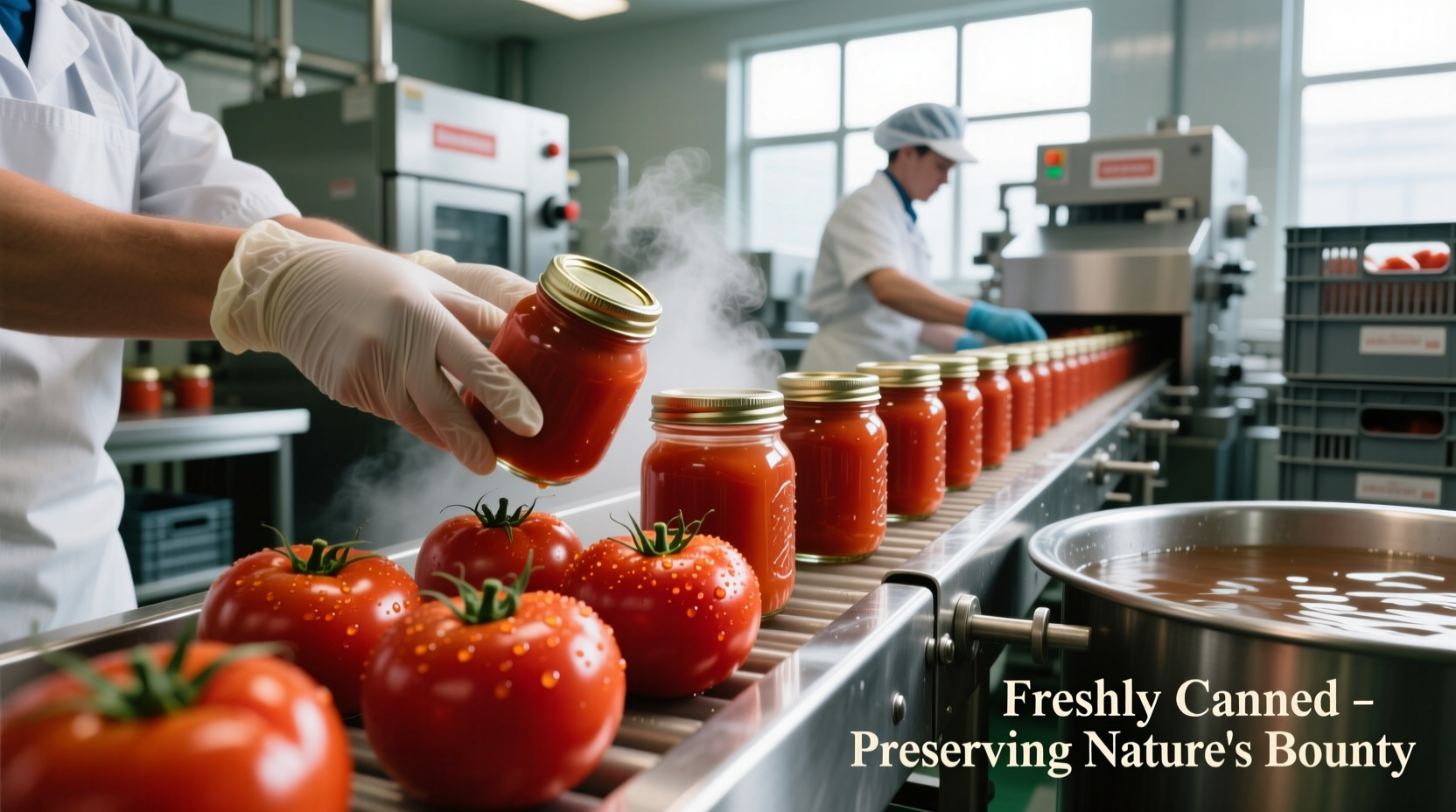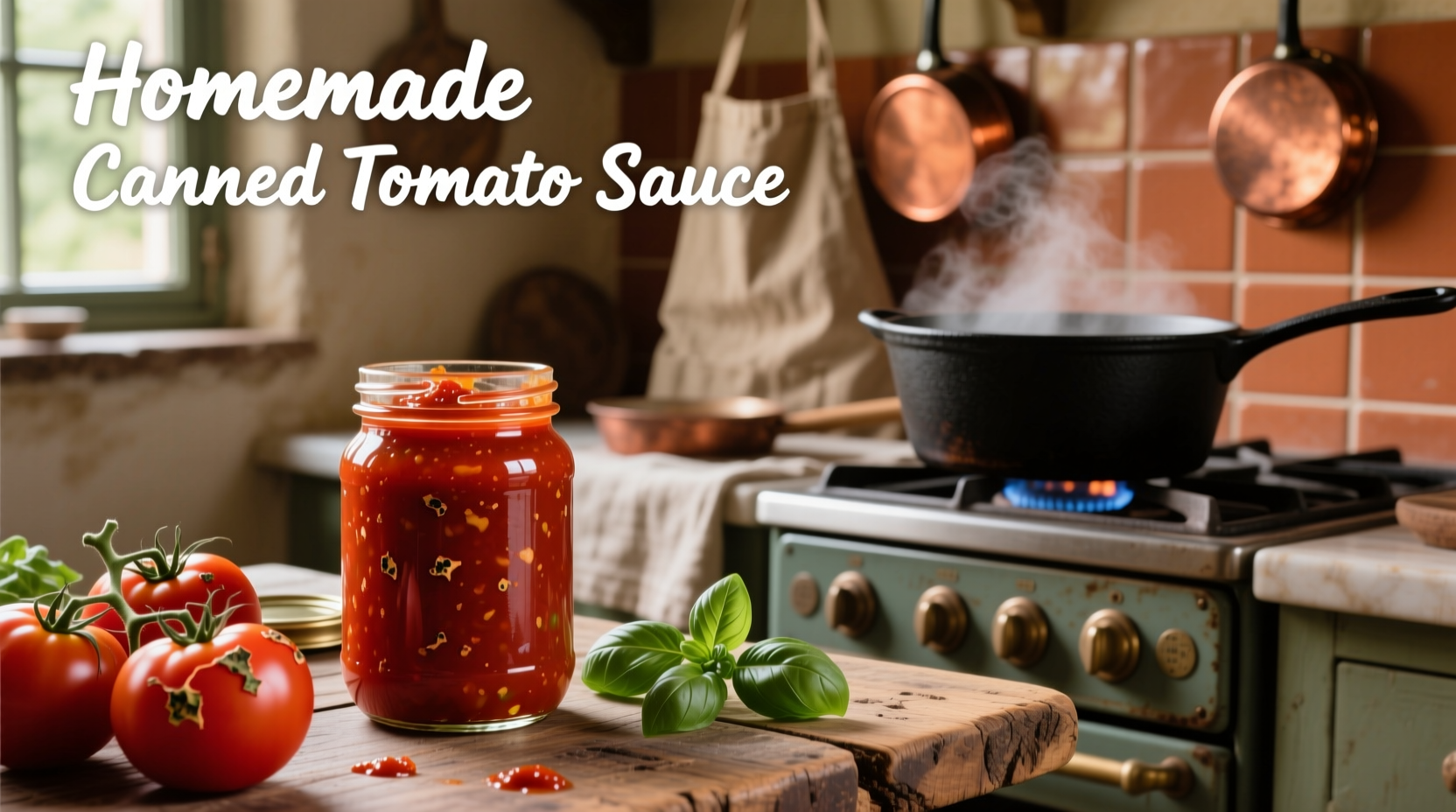This tested tomato sauce recipe yields 7 quarts of shelf-stable sauce with proper acidity for safe canning, ready to preserve summer's harvest in just 3 hours. Follow these USDA-compliant steps for pH-balanced sauce that maintains flavor and safety for 12-18 months in your pantry.
There's nothing quite like opening a jar of homemade tomato sauce in winter, capturing summer's garden-fresh flavor. But improper canning techniques can lead to dangerous foodborne illnesses. This scientifically validated recipe follows National Center for Home Food Preservation guidelines to ensure your sauce remains both delicious and safe. I've processed hundreds of quarts using this exact method, and today I'll share the precise measurements, timing, and safety checks that make the difference between perfect preserves and pantry hazards.
The Science Behind Safe Tomato Canning
Tomato acidity determines whether your sauce can be safely water-bath canned. Modern tomatoes often lack sufficient natural acidity (pH must be below 4.6 to prevent botulism growth), requiring added acid. This recipe includes precisely measured lemon juice to guarantee safety without compromising flavor.
| Historical Canning Timeline | Key Safety Developments |
|---|---|
| Pre-1900 | Open-kettle method (unsafe by modern standards) |
| 1909 | USDA publishes first canning guidelines |
| 1943 | Introduction of pH testing for home canning |
| 2020s | Current guidelines require 2 tbsp bottled lemon juice per quart |
Essential Equipment Checklist
Before starting, gather these non-negotiable items:
- 7 quart-sized mason jars with NEW lids (reusing lids risks seal failure)
- Large 20+ quart stockpot for water bath processing
- Food-safe thermometer (to verify 212°F processing temperature)
- Acid testing strips (optional but recommended for first-time canners)
- Pressure canner (only needed for low-acid additions like garlic or onions)
Critical safety note: Never use antique canning equipment. Modern jar designs and lid technology have significantly improved safety. The USDA Agricultural Research Service confirms that older equipment may not achieve proper vacuum seals.
Perfect Tomato Sauce Recipe (7-Quart Batch)

Ingredients
- 21 pounds ripe tomatoes (Roma preferred for lower moisture)
- 1 cup bottled lemon juice (NOT fresh-squeezed for consistent acidity)
- 2 tablespoons pickling salt (optional for flavor)
- 1 tablespoon dried oregano (added after processing for best flavor)
Step-by-Step Process
- Prep tomatoes: Blanch tomatoes in boiling water for 30 seconds, then transfer to ice bath. Peel and roughly chop, removing cores.
- Simmer sauce: In 20-quart pot, cook tomatoes 45 minutes until thickened, stirring occasionally. Skim foam.
- Add acid: Stir in lemon juice and salt. Verify temperature reaches 180°F minimum before filling jars.
- Fill jars: Leave 1/2-inch headspace. Remove air bubbles with non-metallic utensil.
- Process: Submerge jars in boiling water bath for 45 minutes (adjust for altitude: +5 min per 1,000 ft above sea level).
Storage Guidelines & Safety Checks
After processing, cool jars upright for 12-24 hours. Check seals by pressing lid centers - no flexing indicates proper seal. Store in cool, dark place for 12-18 months. The University of Minnesota Extension confirms properly canned tomato sauce maintains quality for 18 months when stored below 75°F.
When to discard: Discard any jar showing these signs:
- Broken seal (lid pops when pressed)
- Cloudy liquid or unnatural color
- Foam or bubbling when opened
- Off smells (fermented, yeasty, or moldy)
Flavor Variations (With Safety Notes)
While customization is tempting, certain additions require special handling:
| Variation | Safe Modification | Unsafe Practice |
|---|---|---|
| Basic Sauce | Follow recipe exactly | Reducing lemon juice |
| Herb-Infused | Add dried herbs AFTER processing | Adding fresh herbs before canning |
| Spicy Arrabbiata | Use 1-2 dried red peppers per quart | Adding fresh garlic or onions |
Remember: Adding low-acid ingredients like fresh garlic, onions, or mushrooms requires pressure canning at 10 PSI for 25 minutes. Water bath canning alone won't destroy botulism spores in these additions.
Troubleshooting Common Issues
Sauce too thin: Simmer longer before filling jars - but never add flour or cornstarch before canning (creates unsafe conditions).
Siphoning (liquid loss): Caused by sudden temperature changes. Cool jars gradually and maintain steady processing temperature.
Discoloration: Usually harmless oxidation. Prevent by ensuring proper headspace and removing air bubbles.
Frequently Asked Questions
Can I use vinegar instead of lemon juice for canning tomato sauce?
Yes, but use 4 tablespoons of 5% acidity vinegar per quart instead of 2 tablespoons lemon juice. Bottled lemon juice provides more consistent acidity and better flavor for tomato preservation.
How long can I store home-canned tomato sauce?
Properly canned and stored tomato sauce maintains best quality for 12-18 months. Always check seals and inspect for spoilage signs before use, regardless of timeframe.
Why must I use bottled lemon juice instead of fresh?
Bottled lemon juice has standardized acidity (0.5% or 5% acidity), while fresh lemon juice varies by fruit, season, and storage. Consistent acidity is critical for safe water bath canning.
Can I reduce the salt in this canning recipe?
Yes, salt is optional for flavor and doesn't affect safety. The critical safety components are the lemon juice quantity and proper processing time. Omit salt without compromising shelf stability.











 浙公网安备
33010002000092号
浙公网安备
33010002000092号 浙B2-20120091-4
浙B2-20120091-4